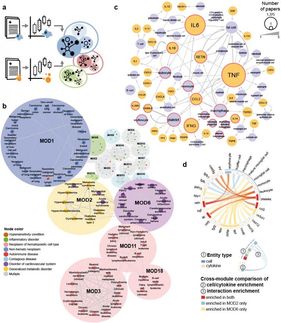Newly recognized syndrome keeps patients from full recovery
Advertisement
University of Florida researchers have identified a medical condition they say keeps many intensive care, heart surgery and burn patients from recovering fully and returning home.
Called persistent inflammation, immunosuppression and catabolism syndrome, or PICS, for short, the newly named condition defies existing treatments and leaves patients weak and unable to breathe or move properly. Patients generally recover enough from their original illnesses or injuries to be discharged from the hospital, but not enough to return to normal life.
Finding a solution to this enigmatic problem may allow most patients to return to health, and could potentially save billions of dollars in extra health care costs each year.
“Hospital mortality is progressively decreasing, but more people are being sent to long-term acute care facilities,” said Frederick Moore, M.D., a professor and chief of acute care surgery in the UF College of Medicine department of surgery. “We’re creating this new population of chronically, critically ill patients.”
Moore and colleagues, including Lyle Moldawer, Ph.D., a professor and vice chairman of research in the department, and Bruce McKinley, Ph.D., a professor of surgery, define and describe the new syndrome in the Journal of Trauma and Acute Care Surgery.
In the past, many patients in intensive care succumbed to complications such as shock or multiple-organ failure after major illness or injury and related surgery. Treatment advances now allow most patients to survive those once overwhelming conditions. Still, for many of those patients, PICS is an obstacle to full recovery.
About 250,000 U.S. patients develop PICS each year as a result of severe sepsis, an infection that spreads throughout the body and overwhelms the immune system, the UF researchers estimate. Add to that PICS in other trauma and emergency general surgery patients and the actual number of cases is likely much higher. Extra medical costs associated with intensive and long-term acute care for those patients could reach a $100 billion per year — a conservative estimate — the researchers said.
Moore and colleagues in the departments of surgery and anesthesiology identified the syndrome by analyzing and comparing clinical observations and decades’ worth of immunology research they and others conducted.
The work, funded in part by the National Institute of General Medical Sciences, is the first step toward establishing PICS as a widely recognized condition, the researchers said.
“Further research will be needed to confirm its epidemiology and immune system profile and to identify early predictors so that we can design and study new ways to prevent and treat it,” Moore said.
PICS occurs when the immune system “panics” in response to multiple health threats and releases large numbers of immature immune cells from the bone marrow. These cells have mixed effects on the patient: They cause harmful inflammation and do not protect the body as well as their mature counterparts.
“You have a big surgery that goes fine,” Moore said. “But if you have a complication, and say you develop pneumonia, or an infection at the surgical site, then you have the second hit. It’s this repeated stimulation that causes the bone marrow to release these immature cells.”
Though health care providers usually can help patients avoid major complications such as shock and multiorgan failure, they can’t stop patients’ immune systems from flooding the body with immature immune cells.
Full recovery eludes patients who have PICS because the syndrome drains fuel from the body’s last-resort energy reserve.


























































